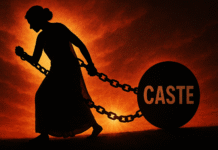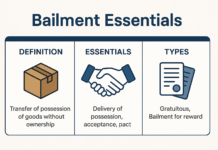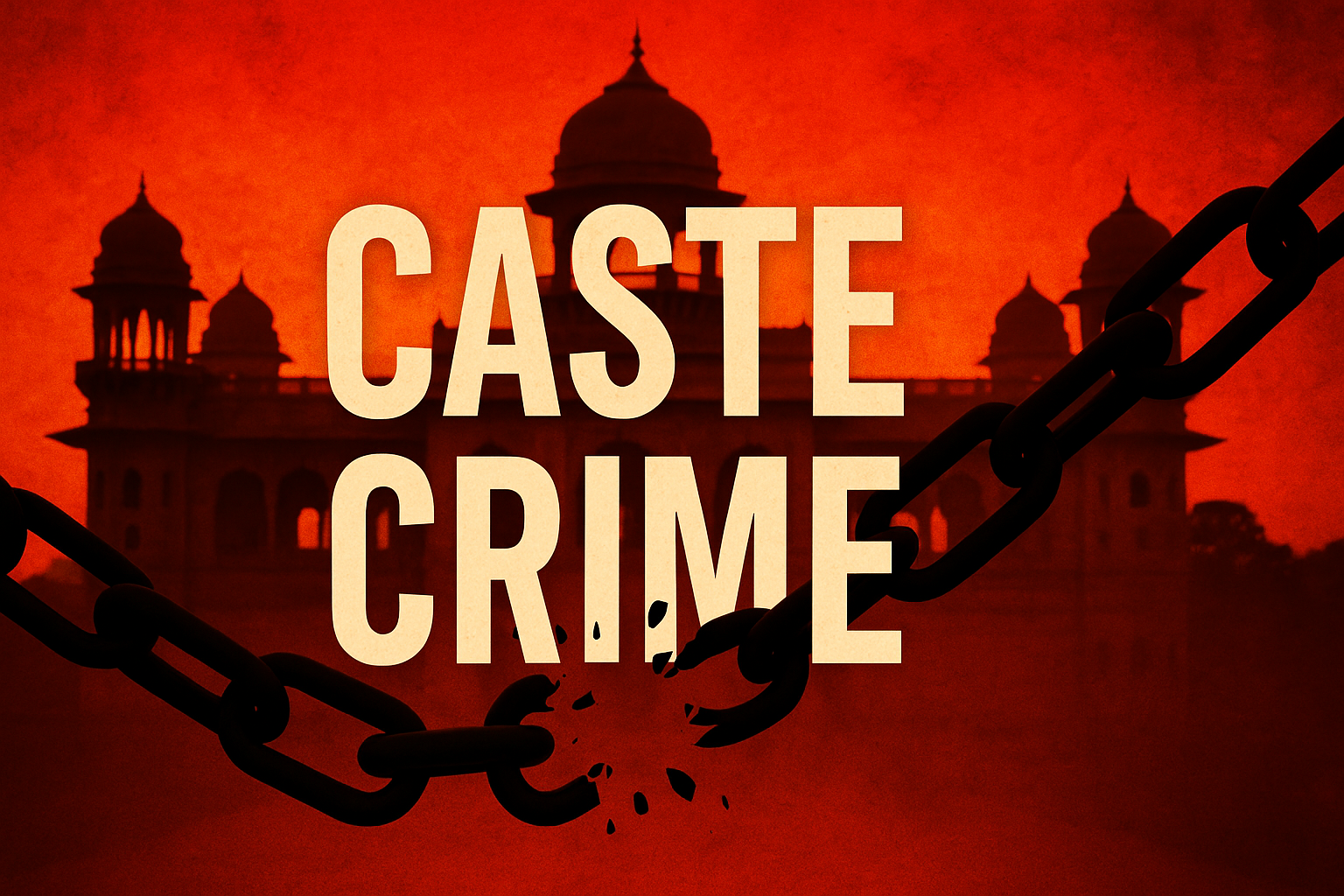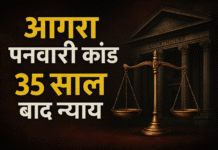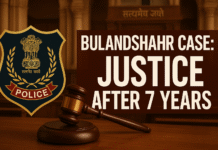Rajasthan Caste Crimes: Over 57,000 Cases in 5 Years
A Crisis of Justice and Social Transformation
The stark headline captures a disturbing reality – 56,879 cases were registered between 2017 and 2023 under the Scheduled Castes and Scheduled Tribes (Prevention of Atrocities) Act in Rajasthan. This figure represents not merely a statistical anomaly, but a systemic crisis that exposes the deep-rooted caste hierarchies and feudal structures that continue to plague India’s largest state by area. The data reveals that crimes against Dalits and Adivasis have increased at an average rate of 22 percent from 2018 to 2022, while the conviction rate has alarmingly declined from 27.49 percent in 2020 to 22.38 percent in 2022. newslaundry
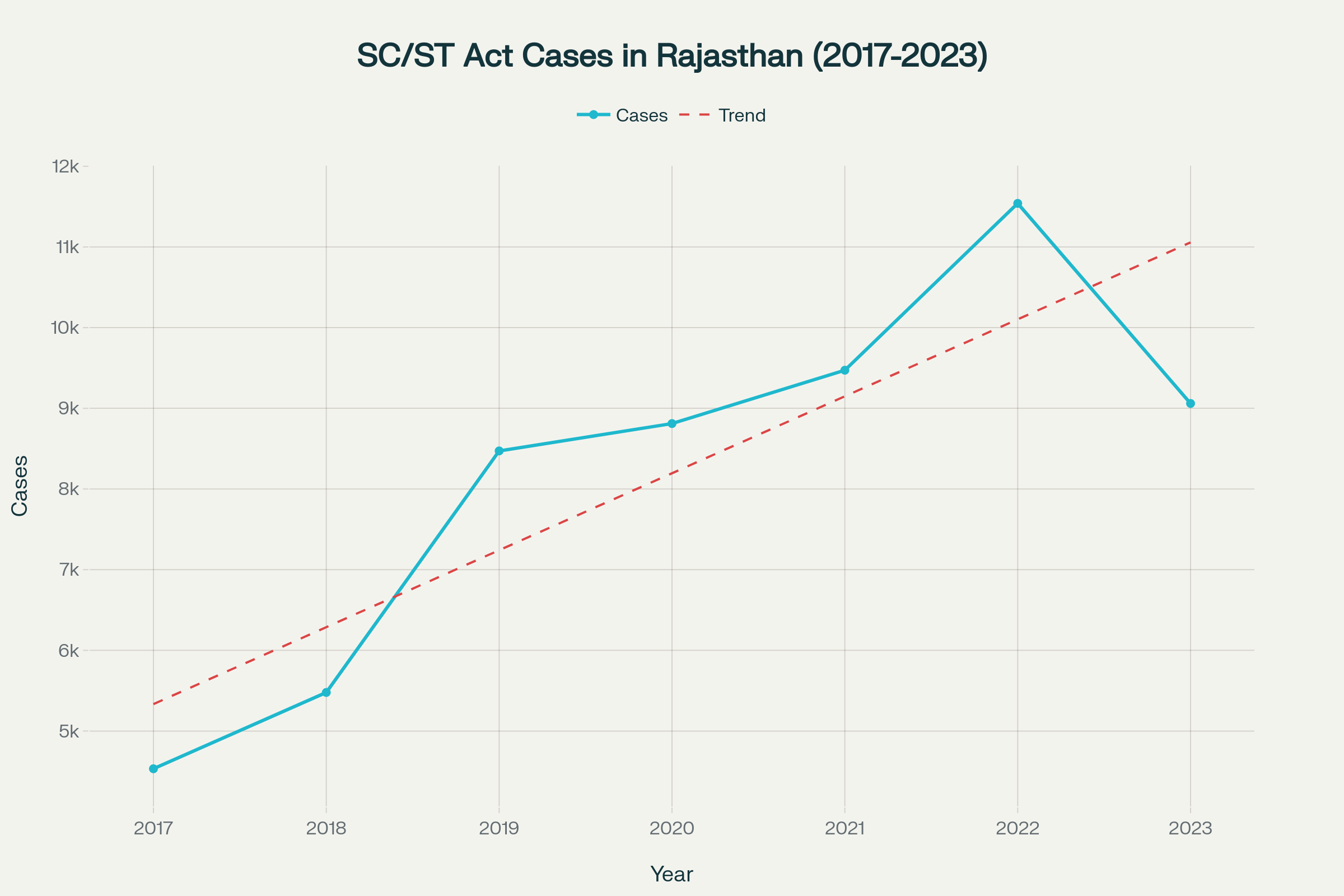
Year-wise trend of SC/ST atrocity cases registered in Rajasthan (2017-2023)
The Magnitude of Violence: Understanding the Numbers
The trajectory of caste-based violence in Rajasthan presents a troubling picture of escalating discrimination and atrocities. From 4,532 cases in 2017, the numbers surged dramatically to reach a peak of 11,540 cases in 2022 before declining to 9,060 cases in 2023. This represents a 154.6 percent increase from the baseline year to the peak, indicating not just isolated incidents but a systematic pattern of violence against marginalized communities. newslaundryyoutube
At the national level, Rajasthan ranks second among all Indian states in terms of crimes against Scheduled Castes, accounting for 8,752 cases in 2022. This represents 15.2 percent of all SC crimes nationwide, making it a significant contributor to India’s caste atrocity statistics. For Scheduled Tribes, Rajasthan’s position is even more concerning, ranking second nationally with 2,498 cases, representing 24.8 percent of all ST crimes in the country. thenewsminute+1
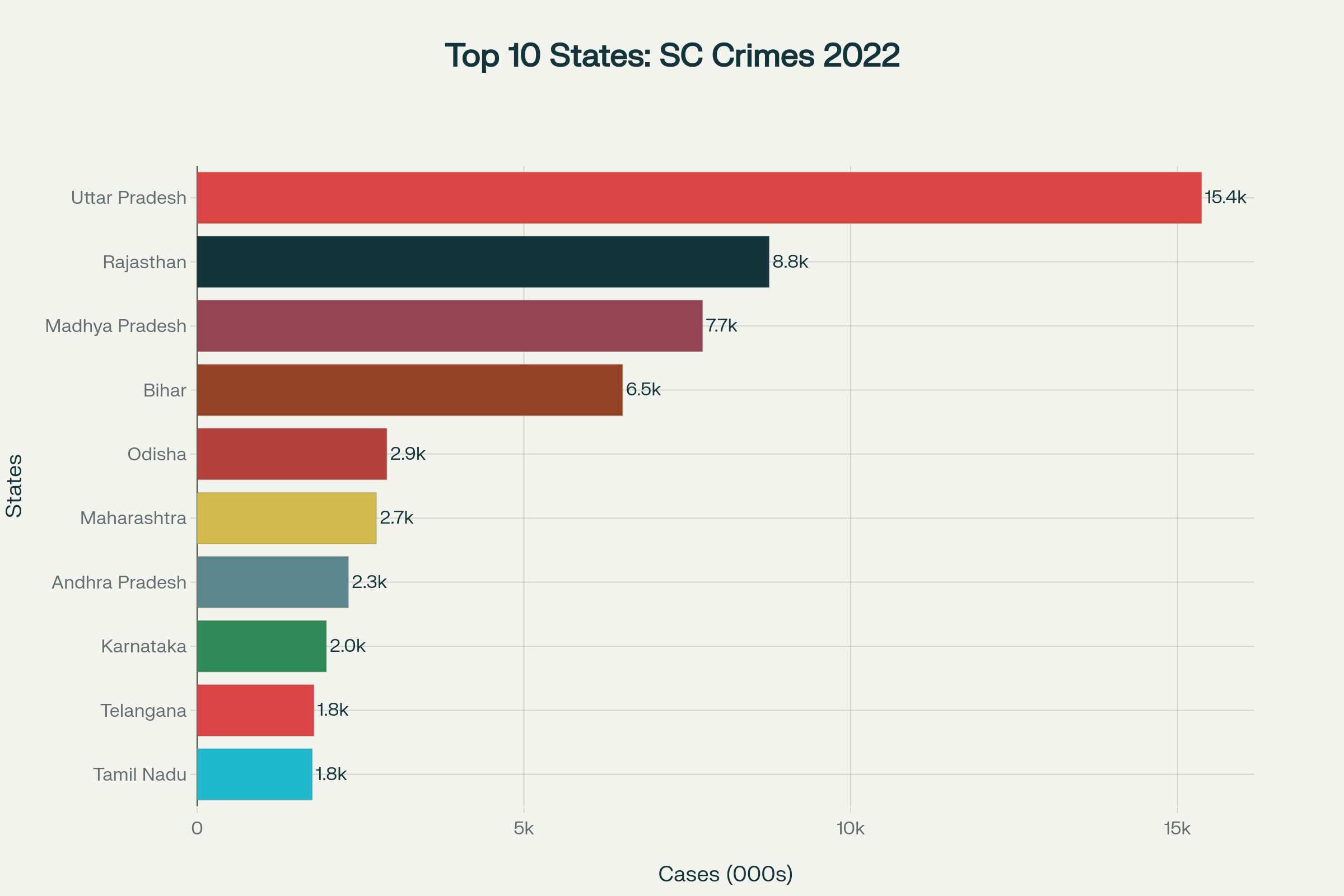
Top 10 Indian states by number of crimes against Scheduled Castes in 2022
The state’s performance appears particularly alarming when considering that Scheduled Castes comprise 17.83 percent of Rajasthan’s total population according to the 2011 Census. This demographic composition, combined with the state’s feudal history and entrenched caste hierarchies, creates a volatile environment where traditional power structures resist social and economic mobility among marginalized communities. newslaundry
Systemic Failures in the Justice System
Perhaps more troubling than the raw numbers is the systematic failure of the criminal justice system to deliver accountability. Out of the 56,879 caste crime cases registered between 2017-2023, the police filed final reports in only 26,801 cases – approximately 47 percent. Even more concerning, chargesheets were submitted to courts in just 25,762 cases, representing only 45.3 percent of all registered cases. newslaundry
The conviction rates paint an even grimmer picture of institutional failure. The state’s 36 SC/ST special courts reported conviction rates declining from 27.49 percent in 2020 to 22.38 percent in 2022. This downward trend in convictions occurs simultaneously with the upward trend in registered cases, suggesting that the judicial machinery is not only overwhelmed but also inadequately equipped to handle the complexity and volume of caste-based crimes. newslaundry
According to legal experts and activists, several factors contribute to these low conviction rates. Satish Kumar, director of the Dalit Adhikar Kendra in Jaipur, explains the critical difference between state advocates and public prosecutors – the former are “elected based on recommendations from political parties and are neither trained nor accountable,” while the latter are “governmental, experienced and reputed”. This disparity in legal representation significantly affects case outcomes, with only 9 of the 36 special courts having regular state advocates, while the remaining 27 courts rely on public prosecutors nominated from the state law department. newslaundry
Regional Patterns and Geographic Distribution
The geographic distribution of caste crimes across Rajasthan reveals distinct patterns linked to historical, economic, and social factors. The state has identified 11 districts as atrocity-prone: Bharatpur, Shri Ganganagar, Tonk, Alwar, Ajmer, Pali, Barmer, Hanumangarh, Sikar, Baran, and Nagaur. These areas are characterized by specific socio-economic conditions that perpetuate caste-based violence. pib
In western Rajasthan, particularly in districts like Pali, Barmer, Jalore, Sirohi, Nagaur, Bhilwara, and Jhunjhunu, the primary conflict occurs between Meghwals and Rajputs and dominant OBC communities. Land disputes emerge as the central issue driving these conflicts, exacerbated by the growing socio-political consciousness among Dalit youth who increasingly challenge traditional hierarchies. newslaundry
Bhanwar Meghwanshi, a writer and activist, notes that there are fewer cases of untouchability and caste discrimination in the Shekhawati region compared to southwest Rajasthan. The southeastern regions also report fewer incidents due to their different socio-political landscape and smaller Dalit populations. This geographic variation suggests that local power dynamics, economic structures, and historical legacies play crucial roles in determining the prevalence of caste-based violence. newslaundry
Case Studies: Human Stories Behind Statistics
The human dimension of these statistics becomes starkly apparent through specific incidents that gained national attention. The case of nine-year-old Indra Meghwal, who died in Surana village, Jalore district, after allegedly being assaulted by his school teacher for touching a pot of water designated for “upper castes”, exemplifies the continuing practice of untouchability in its most brutal form. newslaundry
The teacher, Chhail Singh, was released on bail exactly a year after Indra’s death, and the family continues to struggle for justice. The case reveals multiple systemic failures: the police did not include the fact that Indra touched the pot in their chargesheet, presenting conflicting theories about the cause of his injuries. The defense obtained a stay order from the Rajasthan High Court, slowing the pace of hearings, and out of 78 witnesses named in the chargesheet, only eight statements had been presented in court. newslaundry
Similarly, the murder of 28-year-old Jitendra Meghwal in Barwa village, Pali, for allegedly aspiring to a lifestyle similar to upper castes illustrates how economic and social mobility among Dalits triggers violent backlash from dominant communities. The incident forced the entire family to abandon their ancestral village, and despite promises of compensation and government jobs, more than a year and a half later, nothing has materialized except arrests. newslaundry
The case of Kartik Bhil, an Adivasi social activist from Sheoganj tehsil who was assaulted and later died from his injuries, represents the intersection of caste discrimination with political power dynamics. The controversy centered around land lease documents that Bhil families had been seeking since 2000 but remained unsigned by authorities, allegedly due to the local MLA’s caste affiliations and bias against Adivasi communities. newslaundry
Socio-Economic Roots of Caste Violence
The persistence and escalation of caste-based violence in Rajasthan cannot be understood without examining the deep-rooted socio-economic structures that perpetuate inequality and resistance to social change. Rajasthan’s feudal history, where traditional occupations are weighed down by social equations, creates an environment where dominant castes use violence to maintain their privileged position. newslaundry
Satyaveer Singh, a retired IPS officer, attributes the problem to “feudal arrangements” and “lack of education” that has affected policing as well. The state’s economy, heavily dependent on tourism and mining, offers limited opportunities for social mobility, while the high cost of transport makes it difficult for people to leave their traditional communities for better opportunities elsewhere. newslaundry
The economic dimension becomes particularly evident in the context of land ownership and agricultural relationships. In many villages, Dalit communities remain virtually landless, dependent on upper-caste landowners for employment and survival. This economic dependency creates a power imbalance that dominant communities exploit to maintain traditional hierarchies and resist any attempts at assertion or mobility by marginalized groups. newslaundry
The practice of untouchability remains strong in rural areas, where Dalits are barred from temples, wells, and other public spaces. A 2018 survey by Social Attitudes Research in India (SARI) revealed that two-thirds of the population in rural Rajasthan and 50 percent in urban areas admitted to practicing untouchability. This widespread social acceptance of discriminatory practices creates an environment where violence against Dalits and Adivasis is often seen as legitimate enforcement of traditional social order. rajras+1
The Role of Social Media and Changing Dynamics
Paradoxically, technological advancement has created both opportunities and challenges in addressing caste-based discrimination. Social media has played a significant role in highlighting instances of caste discrimination, making videos go viral more easily and forcing police and administration to take matters seriously. Dilip Solanki, a Dalit journalist in Jalore, notes that “these days, only a video of the crime is required to take matters to the police and the case is filed”. newslaundry
This technological empowerment has given Dalit communities new tools for resistance and advocacy. Anil Dhenwal, state in-charge of the Bhim Army, explains that “today we have phones. We can send videos to the SP and DM. My father and grandfather did not have the confidence to go to officials. We have got a lot of courage by being able to reach the SP and DM”. newslaundry
However, social media also serves as a platform where hate speech spreads fastest, fanning the flames of religious and inter-caste tension. This dual nature of digital technology reflects the broader contradictions in contemporary Indian society, where modernization coexists with traditional prejudices and power structures. newslaundry
The increasing socio-political consciousness among Dalit youth, driven by better access to education and information, has led them to challenge traditional hierarchies and assert their rights. This growing assertiveness often triggers violent responses from upper-caste communities who perceive such challenges as threats to their traditional dominance and privilege. newslaundry
Government Response and Policy Failures
Despite constitutional guarantees and legislative frameworks, the government’s response to caste-based violence in Rajasthan reveals significant gaps between policy intentions and implementation realities. The SC/ST Act mandates the constitution of a state-level vigilance and monitoring committee headed by the chief minister, supposed to meet twice a year. However, Chief Minister Ashok Gehlot led such a meeting in August 2023 for the first time in 13 years, despite a Rajasthan High Court order in 2015. newslaundry
The institutional machinery established for protection remains inadequate and underutilized. While 37 SC/ST protection cells have been set up across 33 districts, headed by Deputy SPs, their effectiveness remains questionable given the continuing escalation of crimes. Additionally, district and block-level committees remain inactive, and not a single awareness center mandated by the Act has been opened at the district level. cvmc+1
The state’s legal aid system provided assistance to only 315 persons (177 SC, 138 ST) in 2023, a number that appears inadequate given the scale of registered crimes. Similarly, only 30 persons were provided traveling and maintenance expenses during investigation and trial, suggesting significant gaps in victim support systems. cvmc
The Rajasthan government finally notified the Rajasthan Schedule Caste and Schedule Tribe Rehabilitation Scheme 2024 in February 2024, following sustained pressure from the High Court. This delay in implementing mandated rehabilitation schemes reflects the administrative apathy that contributes to the persistence of caste-based violence. timesofindia.indiatimes
Economic Implications and Development Challenges
The scale of caste-based violence in Rajasthan has profound implications for the state’s economic development and social cohesion. The exclusion and marginalization of communities that comprise nearly 18 percent of the state’s population represents a massive wastage of human resources and potential. When large sections of the population remain trapped in cycles of violence, discrimination, and poverty, the entire state suffers from reduced productivity, innovation, and social stability. newslaundry
The super-exploitation of Adivasi migrant workers from southern Rajasthan to Gujarat’s growth centers illustrates how caste-based discrimination extends beyond state boundaries and affects regional economic dynamics. Despite migration providing roughly 50 percent of total household income for migrant households, for Adivasis, remittances barely support basic consumption and do not lead to any significant capital formation. aajeevika
The economic costs of maintaining discriminatory structures extend beyond direct violence to include reduced investment in human capital, limited social mobility, and persistent poverty among marginalized communities. The continuing dominance of feudal structures inhibits the development of modern economic relationships and institutions that are essential for sustained economic growth. neuroquantology
Legal Framework and Enforcement Challenges
The legal architecture for addressing caste-based violence in India, while comprehensive on paper, faces significant implementation challenges in Rajasthan. The Scheduled Castes and Scheduled Tribes (Prevention of Atrocities) Act, 1989, as amended in 2015, provides for enhanced punishment and special procedures for handling atrocity cases. However, the effectiveness of this legal framework depends critically on its implementation by police, prosecutors, and courts. newslaundry
Investigation quality remains a persistent problem, with the average time for completing investigations and filing chargesheets showing significant delays. In 2023, while 3,835 cases were investigated and chargesheets filed within the mandated sixty days, 5,180 cases exceeded this timeline, indicating systemic capacity constraints. cvmc
The special court system, designed to ensure speedy trial of atrocity cases, operates 36 courts across the state but faces challenges in terms of both infrastructure and human resources. The quality of prosecution varies significantly, with only 9 courts having regular state advocates while 27 rely on public prosecutors, creating inconsistencies in legal representation quality. newslaundry+1
The appeal system also shows weaknesses, with only 75 appeals filed in superior courts against 2,164 cases that ended in acquittal, suggesting either lack of resources or insufficient commitment to pursuing justice in higher courts. cvmc
The Path Forward: Recommendations and Solutions
Addressing the crisis of caste-based violence in Rajasthan requires a multi-pronged approach that tackles both immediate law and order challenges and deeper structural issues. Strengthening the criminal justice system through better training of police officers, improved investigation procedures, and enhanced prosecution capabilities represents the first line of defense. newslaundry
The state government’s commitment to conducting regular meetings of vigilance and monitoring committees and activating district and block-level committees could significantly improve coordination and accountability. Similarly, establishing the mandated awareness centers and ensuring adequate funding for legal aid and victim support services would address critical gaps in the current system. newslaundry
Economic empowerment of marginalized communities through targeted skill development, entrepreneurship support, and ensuring equal access to government contracts and opportunities could address some of the root causes of conflict. The implementation of the Rajasthan Schedule Caste and Schedule Tribe Rehabilitation Scheme 2024 provides an opportunity to create comprehensive support systems for victims and their families. timesofindia.indiatimes+1
Educational interventions, including awareness campaigns about constitutional rights and legal protections, could help both prevent atrocities and encourage reporting when they occur. The role of social media in highlighting injustices should be leveraged while simultaneously addressing its potential for spreading hate speech and communal tensions. newslaundry
Conclusion: Justice Delayed, Democracy Denied
The crisis of caste-based violence in Rajasthan, as captured in the statistic of over 57,000 crimes in five years, represents more than a law and order problem – it constitutes a fundamental challenge to India’s constitutional promise of equality and social justice. The declining conviction rates, persistent institutional failures, and continuing social acceptance of discriminatory practices reveal the distance between legal frameworks and lived realities for millions of Dalits and Adivasis in the state.
The individual stories of Indra Meghwal, Jitendra Meghwal, and Kartik Bhil serve as powerful reminders that behind every statistic lies human suffering, broken families, and shattered dreams. Their struggles for justice reflect the broader challenges faced by marginalized communities in accessing basic rights and dignity in a society still grappling with the legacy of caste hierarchy and feudal oppression. newslaundry
The path forward requires sustained political will, institutional reform, and social transformation that goes beyond legislative measures to address the deeper cultural and economic structures that perpetuate discrimination. Only through such comprehensive efforts can Rajasthan hope to break the cycle of caste-based violence and create a society where the constitutional promise of equality becomes a lived reality for all its citizens. newslaundry
The stakes could not be higher – the failure to address this crisis not only perpetuates injustice for marginalized communities but also undermines the foundations of democratic governance and social cohesion that are essential for the state’s progress and development. As civil rights activist Bhagwana Ram notes, Dalit youths are becoming more outspoken and economically self-reliant, creating both opportunities for positive change and potential for increased conflict if structural issues remain unaddressed. The choice facing Rajasthan is clear: embrace genuine social transformation or continue to bear the costs of perpetuating an unjust and unsustainable social order. newslaundry
- https://www.newslaundry.com/2023/11/16/rajasthan-over-56000-caste-crimes-in-5-years-a-shrinking-conviction-rate-shoddy-final-reports
- https://www.youtube.com/watch?v=K3vJKZzxKjY
- https://www.thenewsminute.com/news/ncrb-data-shows-increase-in-crimes-against-scs-and-sts-up-and-rajasthan-on-top
- https://cjp.org.in/up-leads-in-cases-of-atrocities-against-dalits-madhya-pradesh-tops-in-most-crimes-reported-against-sts/
- https://www.pib.gov.in/PressReleseDetailm.aspx?PRID=1844972
- https://rajras.in/ras/pre/rajasthan/society/issues/untouchability/
- https://www.cvmc.in/wp-content/uploads/2025/01/2023-SAR-Rajasthan.pdf
- https://timesofindia.indiatimes.com/city/jaipur/raj-scst-rehab-scheme-framed-state-informs-hc/articleshow/108029047.cms
- https://aajeevika.org/wp-content/uploads/2023/10/Super-exploitation-of-adivasi-migrant-labourers.pdf
- https://www.neuroquantology.com/open-access/UNDERSTANDING+CASTE-BASED+POLITICS+AND+SOCIAL+TRANSFORMATION+IN+RAJASTHAN%253A+INTERPRETING+SHYAMLAL+JAIDIA%25E2%2580%2599S+%2522UNTOLD+STORY+OF+A+BHANGI+VICE-CHANCELLOR%2522+%25282001%2529_13821/?download=true
- https://indianexpress.com/article/india/rajasthan-police-data-atrocities-on-scs-sts-at-10-year-high-in-2019-6284908/
- https://www.indiaspend.com/fact-check-rajasthan-not-haryana-witnessing-rising-crime-against-scheduled-castes
- https://www.drishtiias.com/state-pcs-current-affairs/97-sc-atrocities-from-13-states
- https://www.mha.gov.in/MHA1/Par2017/pdfs/par2024-pdfs/RS11122024/1834.pdf
- https://timesofindia.indiatimes.com/city/jaipur/rajasthan-sees-sharp-rise-in-crimes-against-sc-st-in-five-years/articleshow/88443143.cms
- https://www.cvmc.in/wp-content/uploads/2024/10/20240724-RS-AU301-Crime-statistics-2018-2022.pdf
- https://www.mha.gov.in/MHA1/Par2017/pdfs/par2025-pdfs/LS18032025/2946.pdf
- https://www.newslaundry.com/2023/11/17/its-no-better-than-delhi-women-in-rajasthan-on-gehlot-govt-safety-in-public
- https://www.pib.gov.in/PressReleasePage.aspx?PRID=1810983
- https://sansad.in/getFile/annex/265/AU303_b1Qf0g.pdf
- https://finance.rajasthan.gov.in/docs/budget/statebudget/2024-2025%20(Modified%20Budget)/EconomicReviewE.pdf
- https://sansad.in/getFile/annex/267/AU3650_3LM9tI.pdf
- https://ncrb.gov.in
- https://www.youtube.com/watch?v=TMX8QH6CzPA
- https://sje.rajasthan.gov.in/commissions/scc/Default.aspx?PageID=1131
- https://socialjustice.gov.in/public/ckeditor/upload/Summary%20Report-Evaluation%20of%20SCST%20Protection%20Cells_1648793671.pdf
- https://nja.gov.in/Concluded_Programmes/2017-18/P-1096_PPTs/2.False%20Cases%20under%20SC-ST.pdf
- https://cag.gov.in/uploads/download_audit_report/2022/5.%20Chapter%202-0632c3338045c34.37573676.pdf
- https://www.macrotrends.net/global-metrics/countries/ind/india/crime-rate-statistics
- https://www.drishtiias.com/daily-updates/daily-news-analysis/report-on-atrocities-against-scs-and-sts
- https://www.police.rajasthan.gov.in/old/CrimeBook/CIR2016.pdf
- https://www.police.rajasthan.gov.in/old/MonthlyReport.aspx
- https://www.indiastatdistricteducation.com/rajasthan/jaipur/crimeandlaw/incidenceandrateofcrimescommittedagainstscheduledcastes/data-year/2022
- https://www.pib.gov.in/Pressreleaseshare.aspx?PRID=1781362
- https://jankalyanfile.rajasthan.gov.in/Content/UploadFolder/DepartmentMaster/112/2022/Aug/30399/115728.pdf
- https://rajasthan.census.gov.in/pca_2011_final_data/pca_chapter_2.pdf
- https://www.indiastat.com/rajasthan-state/data/crime-and-law/religion-and-caste
- https://nhapoa.gov.in/uploads/files/List-of-special-police-stations-atrocity-prone-areas.pdf
- https://idsn.org/wp-content/uploads/user_folder/pdf/New_files/India/Performan_of_courts_SCST_act-_Study.pdf
- https://lexcomply.com/rsjadmin/news/202207292103Press%20Release%20No.%201844972-%20The%20Scheduled%20Castes%20and%20The%20Schedules%20Tribes%20(Prevent%20of%20Atrocities)%20Act,%201989.pdf
- https://www.drishtiias.com/daily-updates/daily-news-analysis/advancing-sc-st-welfare-in-india
- https://socialjustice.gov.in/writereaddata/UploadFile/arpoaan08.pdf
- https://istart.rajasthan.gov.in/public/Policies/2024/rajasthan-msme-policy-2024.pdf
- https://www.cvmc.in/wp-content/uploads/2023/04/2020-SAR-Rajasthan.pdf
- https://sansad.in/getFile/loksabhaquestions/annex/179/AU1388.pdf
- https://socialjustice.gov.in/writereaddata/UploadFile/arpoa13.pdf
- https://nhapoa.gov.in/en/cms/about-us
- https://socialjustice.gov.in/writereaddata/UploadFile/24771752148499.pdf
- https://nhrc.nic.in/sites/default/files/ATR_KBK_Rajasthan_0.pdf
- https://socialjustice.gov.in/schemes/39
- https://nhapoa.gov.in/files/annual_report_2019_PoA_Act.pdf
- https://www.drishtiias.com/current-affairs-news-analysis-editorials/news-analysis/06-12-2023
- https://clpr.org.in/blog/507-2/
- https://ncwapps.nic.in/pdfReports/VIOLENCE_AGAINST_DALIT_WOMEN_IN_RAJASTHAN_Kundan_Welfare_Society.pdf
- https://www.drishtiias.com/daily-updates/daily-news-analysis/ncrbs-crime-in-india-2022-report
- https://clpr.org.in/blog/caste-discrimination-in-india-a-study-of-ncrb-data-part-iv/
- https://cdnbbsr.s3waas.gov.in/s35065a82a3b4e103b6f33c206062dd768/uploads/2025/06/202506131057344820.pdf
- https://www.insightsonindia.com/2023/12/07/ncrb-report-2022/
- https://journals.openedition.org/samaj/7884?lang=en
- https://ruralindiaonline.org/en/library/resource/crime-in-india-2022-volume-ii/
- https://www.ncrb.gov.in/uploads/nationalcrimerecordsbureau/custom/1701607577CrimeinIndia2022Book1.pdf
- https://sje.rajasthan.gov.in/Default.aspx?PageID=58
- https://www.cvmc.in/wp-content/uploads/2024/09/2022-India-Report.pdf
- https://www.sciencedirect.com/science/article/pii/S0147596714001048
- https://article-14.com/post/killed-for-sporting-a-moustache-dalits-in-rajasthan-s-feudal-villages-face-rising-tide-of-caste-violence-624cf9afb65f5
- https://www.data.gov.in/resource/stateut-wise-number-cases-registered-under-crime-against-scheduled-castes-scsscheduled
- https://www.jetir.org/papers/JETIR2502113.pdf
- https://www.theindiaforum.in/caste/caste-and-careers-limited-mobility-over-three-generations
- http://www.pwescr.org/Dalit_Report.pdf
- https://ijrpr.com/uploads/V4ISSUE11/IJRPR19194.pdf
- https://journals.christuniversity.in/index.php/artha/article/download/6049/2762/17146
- https://rajras.in/ras/mains/paper-1/rajasthan-history/peasant-tribal-movements-in-rajasthan/
- https://cjp.org.in/untouchability-in-2023-garb-dalits-speak-out/
- https://papers.ssrn.com/sol3/Delivery.cfm/5244244.pdf?abstractid=5244244&mirid=1&type=2
- https://rjhssonline.com/HTMLPaper.aspx?Journal=Research+Journal+of+Humanities+and+Social+Sciences%3BPID%3D2023-14-4-9
- https://www.jstor.org/stable/44003841
- https://hte.rajasthan.gov.in/dept/dce/university_of_rajasthan/pnks_government_science_and_commerce_college_dausa/uploads/doc/aruna-gogania_mrp_report.pdf
- https://www.oneducation.net/no-21_april-2025/an-analysis-of-caste-based-discrimination-in-educational-settings-in-india-bridging-the-theory-and-narratives/
- https://www.ijhssi.org/papers/v4(3)/Version-1/H0431041051.pdf
- https://janataweekly.org/killed-for-sporting-a-moustache-dalits-in-rajasthans-feudal-villages-face-rising-tide-of-caste-violence/
- https://kuey.net/index.php/kuey/article/download/8718/6611/17016
- https://ppl-ai-code-interpreter-files.s3.amazonaws.com/web/direct-files/e3b557aae9a0e31023e6d7b436a0501b/c5aaec47-37b2-47f9-95c8-d3621d9316e0/b42890d4.csv
- https://ppl-ai-code-interpreter-files.s3.amazonaws.com/web/direct-files/e3b557aae9a0e31023e6d7b436a0501b/c5aaec47-37b2-47f9-95c8-d3621d9316e0/d20499e2.csv
- https://ppl-ai-code-interpreter-files.s3.amazonaws.com/web/direct-files/e3b557aae9a0e31023e6d7b436a0501b/c5aaec47-37b2-47f9-95c8-d3621d9316e0/11edc9f4.csv




